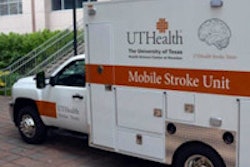"Traditionally, a tagged red blood cell scan was used for the diagnosis of acute lower gastrointestinal bleeding," Dr. Muhammad Awais told AuntMinnie.com. "A newer modality, known as CT with a gastrointestinal bleed protocol, has recently been introduced for the diagnosis of acute LGIB."
The study compared the accuracy of the tagged red blood cell scintigraphy scan with that of a CT gastrointestinal bleed protocol in 76 patients. The CT GI protocol begins with unenhanced CT, followed by arterial, portovenous, and delayed phases at 15, 60 and 180 seconds postcontrast administration. And it handily outperforms scintigraphy, Awais will report.
"Our results show that CT with the gastrointestinal bleed protocol is superior to the traditional nuclear scan for diagnosis of LGIB," wrote Awais, who is a resident at Aga Khan University Hospital in Karachi, Pakistan. More information about the methods and results will be covered in the talk.



















